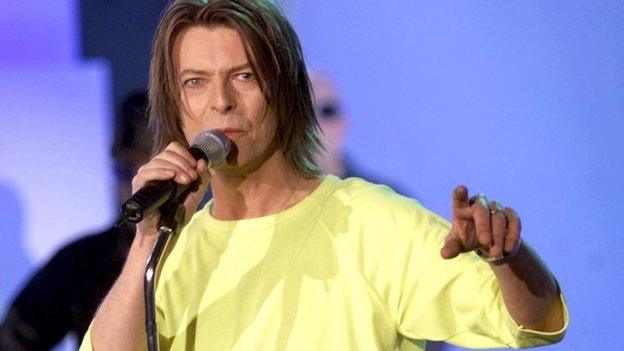David Bowie's iconic outfits
- Published
David Bowie's constant reinvention of himself meant not just varied music but also a vast range of outfits.
Below are some of the iconic ones - and some of the less famous - with fashion experts assessing their impact.

Starman - 1972
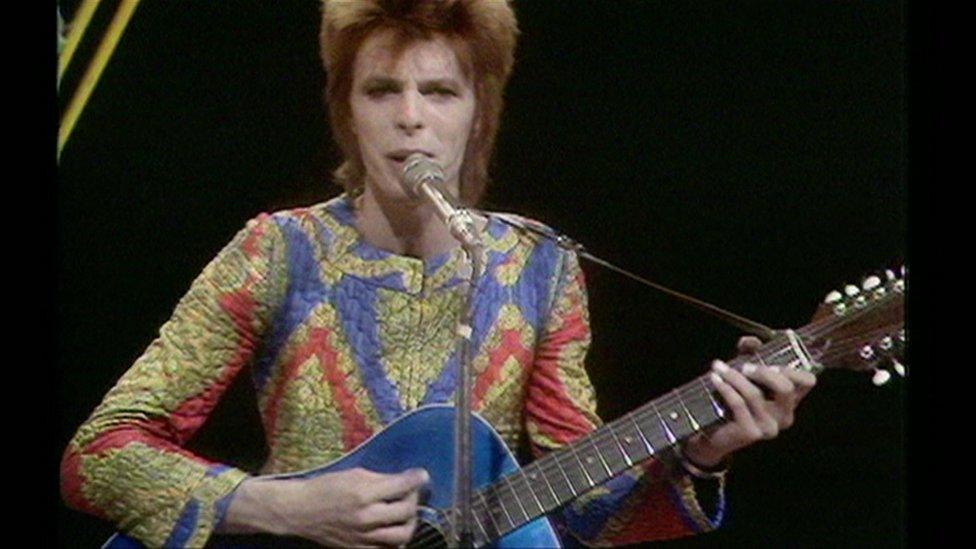
A performance that changed people's lives
Bowie's flaming red hair and multicoloured skin tight bodysuit caused a sensation when he appeared on the TV music show Top of the Pops in July 1972.
Dylan Jones, editor of British GQ magazine, was a 12-year-old living in a small town in Kent. He says it changed his life.
"Normally it would have been a forgettable Thursday but I was about to be astounded.
"It was the first time we were exposed to Ziggy Stardust in all his androgynous glory," said Mr Jones, author of When Ziggy Played Guitar: David Bowie and Four Minutes that Shook the World.
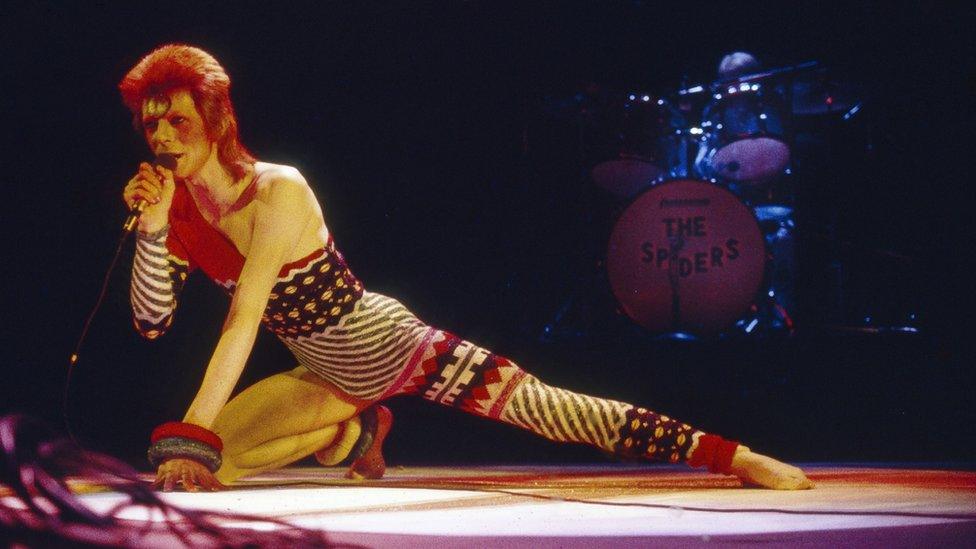
Bowie is best known for his Ziggy Stardust phase
"It was an extraordinary experience. It didn't immediately fill me with gay longings - though with some people it did. But nothing was quite the same afterwards.
That experience was repeated all over the country at a time when Top of the Pops could reach 14 million households and being gay in the UK was difficult, says Victoria Broackes, co-curator of the Victoria & Albert Museum's David Bowie Is, external exhibition, currently showing at the Groninger Museum, external in the Netherlands.
"Fourteen-year-old boys living in small towns, not fitting in at school and knowing they were a little bit different saw that and knew there was a place for them. It's huge. It put Bowie on another level," she says.

Aladdin Sane - 1973
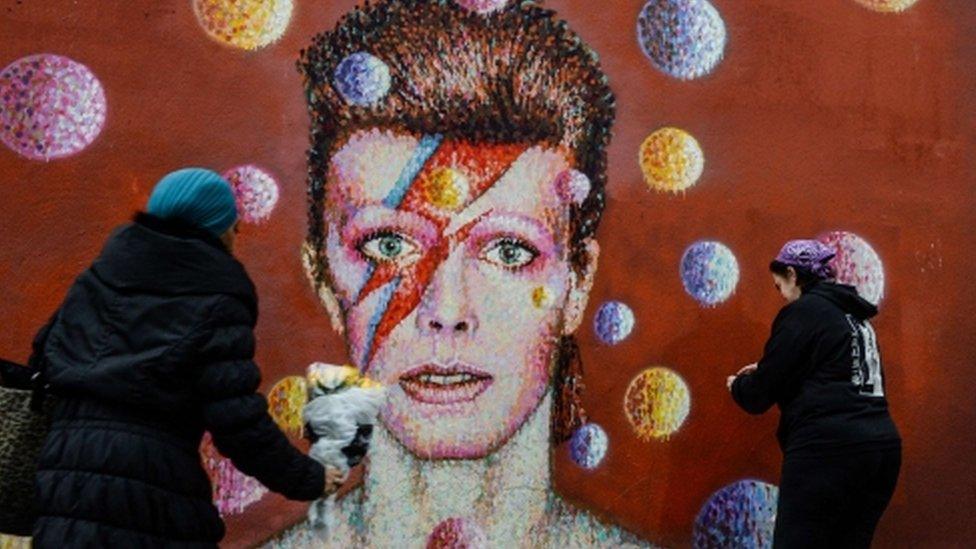
Bowie's characters gave depth to fashion, critics say
"This is one of the most iconic images in pop culture," says Ms Broackes. "At the time it was just another album cover but over time it has gone on to be something else."
She says Bowie drew on influences from the plays of Bertolt Brecht through Japanese Kabuki theatre to Dadism and German expressionism.
The image has continued to reverberate. In 2012, an image of the Queen with a Bowie-style stripe across her face appeared in Bristol, external as she marked 60 years on the throne, with the graffiti artist Banksy thought to have been responsible.
But the power of Bowie's various incarnations lies in more than just his appearance, argues Justine Picardie, editor-in-chief of Harper's Bazaar magazine .
"You can't separate the outfits from the music," she says. "The reason Bowie was so incredibly influential was that he was exploring the link between music, fashion and art.
"Fashion is by its nature ephemeral. When it endures it becomes style and in Bowie's case it's style. "
Ms Picardie says that in her teenage years she was a "Bowie-obsessive".
Fuelled by the potency of Bowie's characters, which linked Major Tom to the first moon landing and Ziggy Stardust to teenage alienation, she dyed her hair red and queued through the night to see him play live,
Other bands had experimented with taking on roles, such as The Beatles with Sgt. Pepper's Lonely Hearts Club Band, but no-one lived their personas like Bowie, she says.
"Fashion is often just seen as surfaces but he gave depth to it because of the way he would inhabit a character," she says.
"Someone who just dresses up wouldn't have this influence. I wouldn't have queued up all night just for a man wearing make-up."

Aladdin Sane tour - 1973
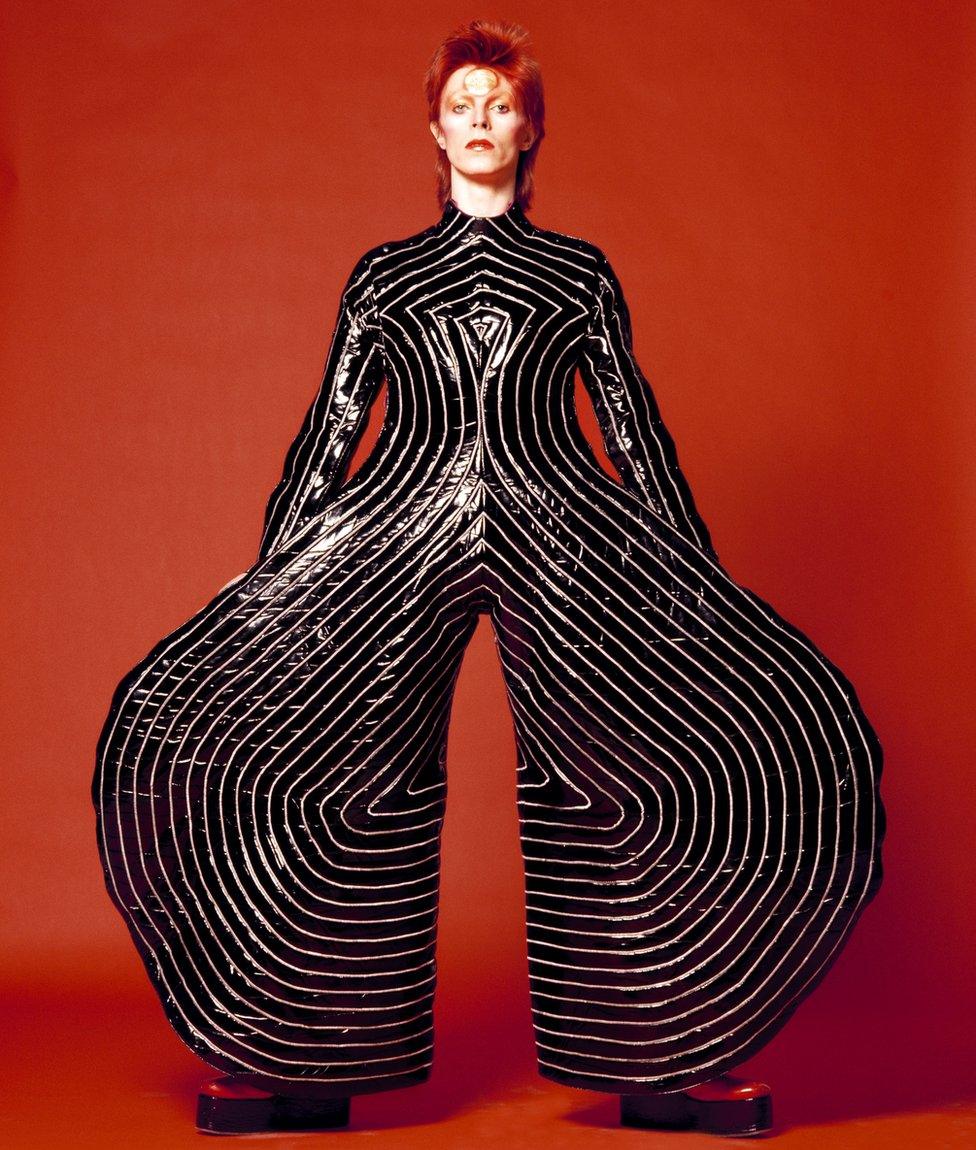
Bowie was influenced by Japanese Kabuki theatre
Kansai Yamamoto was the first Japanese designer to have a show in London. It was on the Kings Road in 1970 and Bowie was there.
"This is significant," says Ms Broackes from the V&A. "It was before he was a major star. He was 24 years old and at a fashion show where something extraordinary was happening."
He watched the Japanese Kabuki theatre models with their wigs of bright red hair model the clothes.
"They didn't just show the clothes, they performed them," says Ms Broackes. "Bowie copied this. He was very interested in Kabuki theatre, not just for the obvious reason of the androgyny but also for the way that as the costumes changed, so did the mood and the scenes."
Unable to afford the original designs, Bowie asked friends to create cheaper versions. He later met Yamamoto and the pair formed a lifelong friendship.

Suits - 1970s+
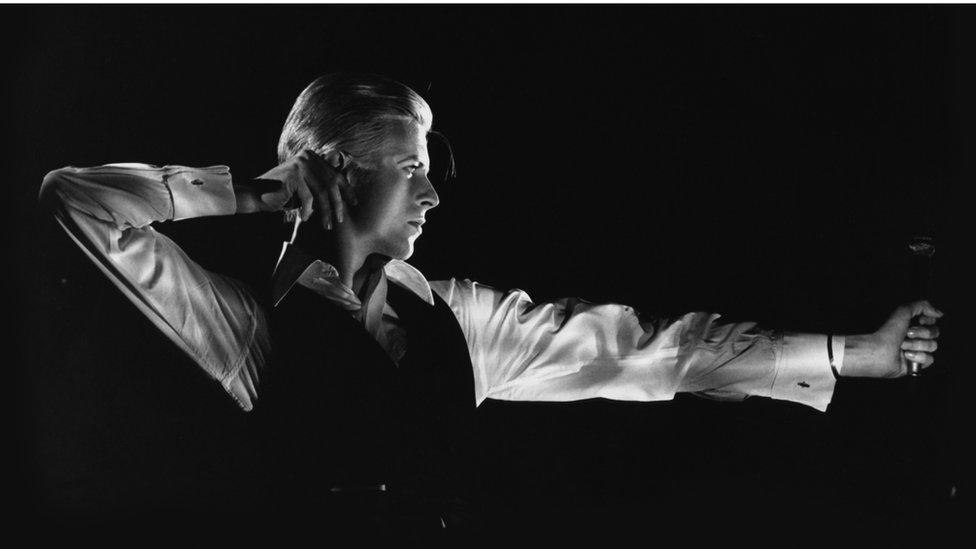
The Station to Station tour announced Bowie's Thin White Duke persona
Bowie wore numerous sharp suits over the years, but two stand out for Victoria Broackes.
The first is the turquoise suit, external he wore in the 1971 video for the song Life on Mars designed by his friend Freddie Buretti, then a young tailor who was also responsible for many of the early Ziggy Stardust costumes.
"It's gorgeous. The suit looks as modern today as it did the day it was made," she says.
The model Kate Moss wore the suit for a Vogue magazine photo shoot in 2003 and had to have the trousers enlarged, Ms Broackes says, so slender was the singer.
The second is a mustard-coloured double-breasted suit, external also from the 1970s, worn with a yellow striped shirt.
Phoebe Philo, who runs fashion company Celine, displayed the image at one of her Paris Fashion Shows, Ms Broackes says, citing it as an inspiration.
"He's just looking so cool," says Ms Broackes.
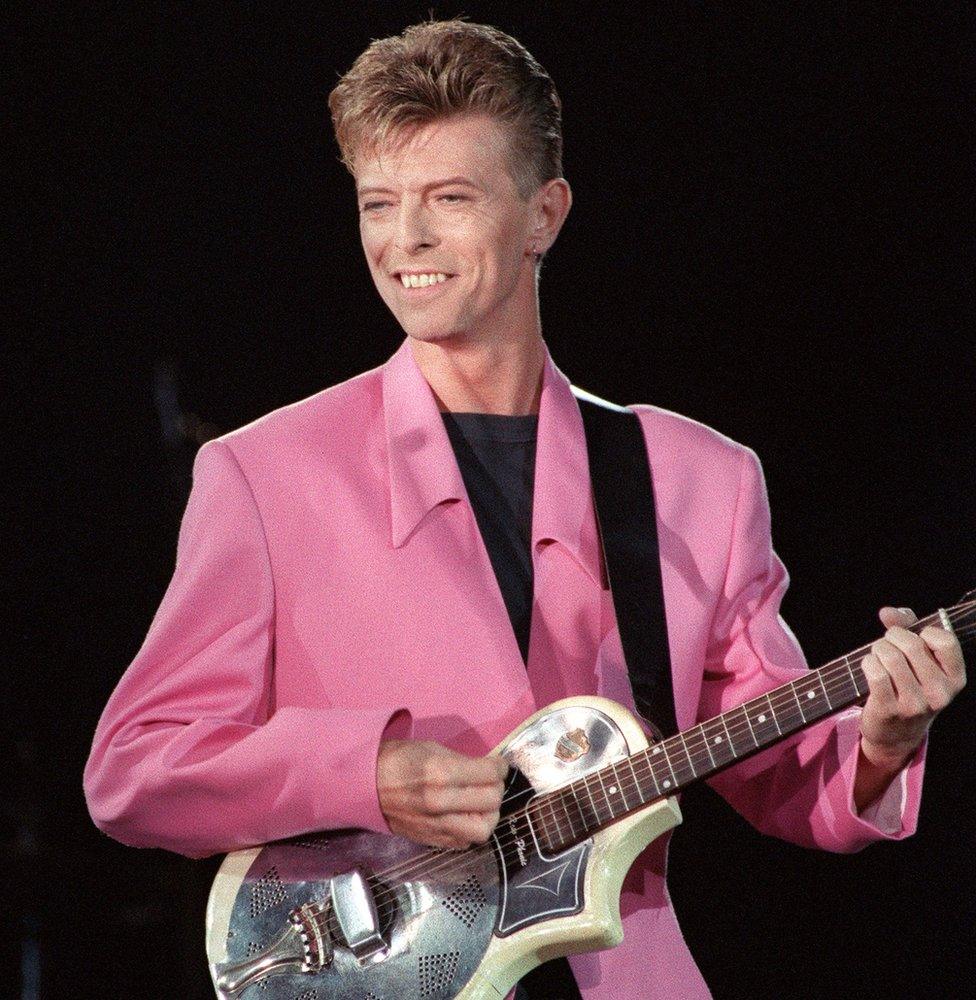
Wearing pink in Paris in 1991
But she says Bowie's influence on the world of fashion is secondary to the wider message of his work.
"Ultimately the really important thing is how he communicated to individuals of all kinds and presented this idea of challenging conventions and being free to express whatever you want. That's what is most important, particularly now in a world where freedom of expression can be problematic."

Earthling - 1997

Giving the English gentleman a punk twist
On this album cover Bowie is wearing a long coat designed by Alexander McQueen. It is torn in the back by cigarettes burns.
"McQueen wasn't yet the star he would become, but Bowie wanted his style of tailoring and then gave it a punk aesthetic," says Ms Broackes.
"On the cover he is looking out over the landscape, a picture of the English gentleman but with a punk influence.
"It's another example of Bowie being ahead of the crowd as this was around the time that a wave of British artists were about to make their mark during the 'Cool Britannia' era."
- Published11 January 2016
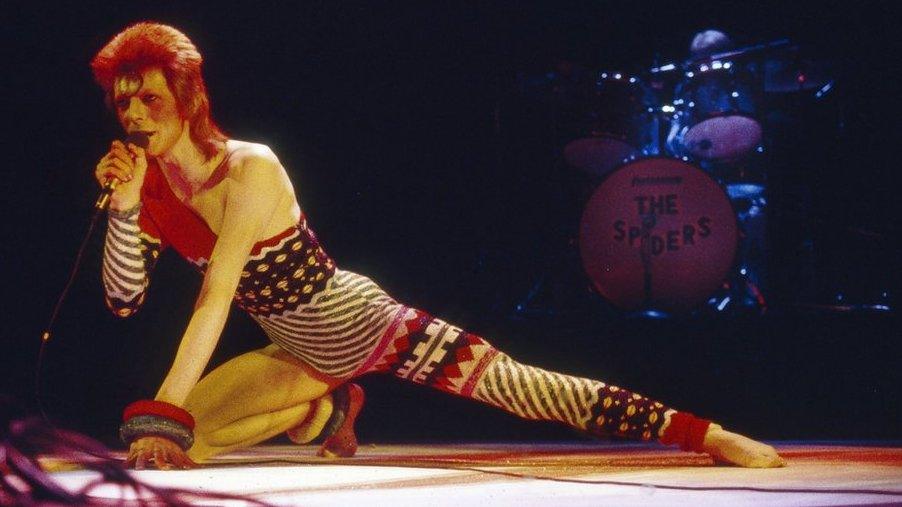
- Published11 January 2016
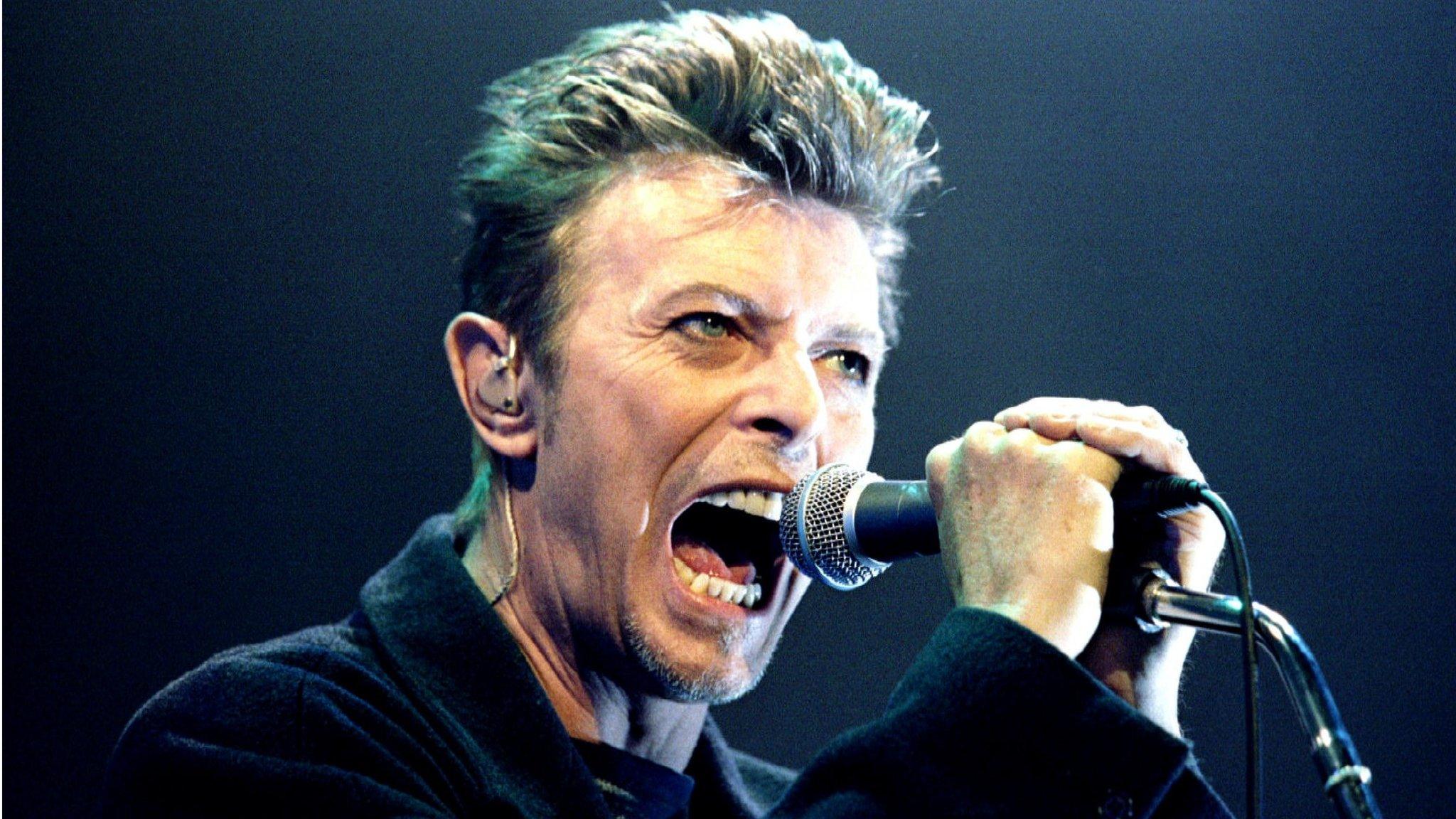
- Published11 January 2016
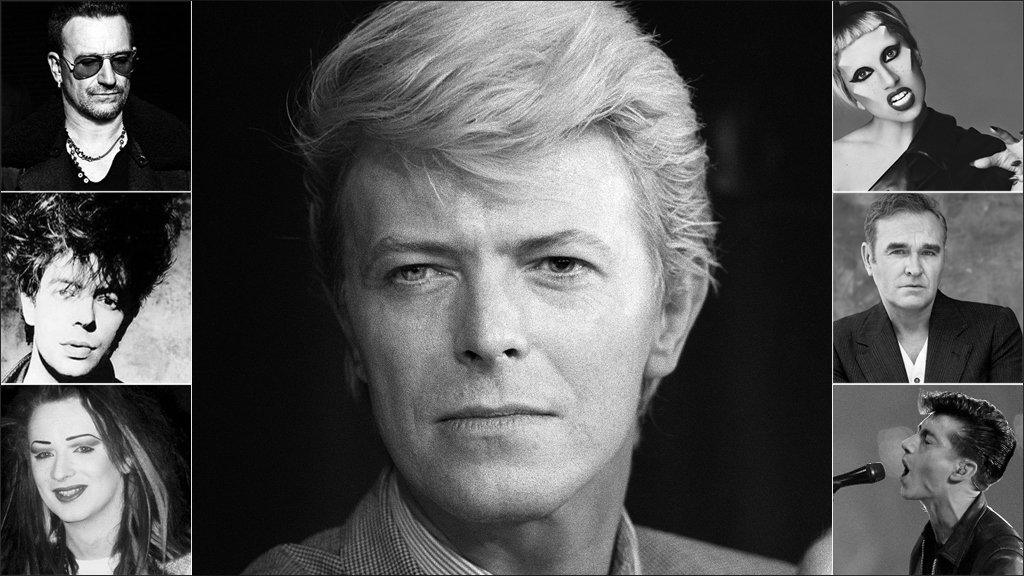
- Published11 January 2016
